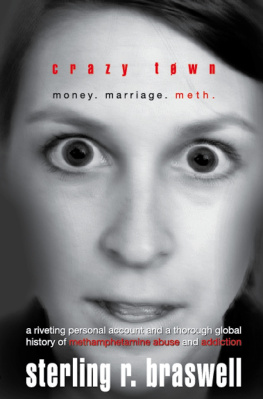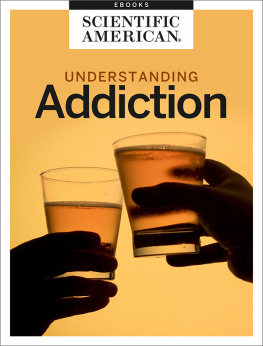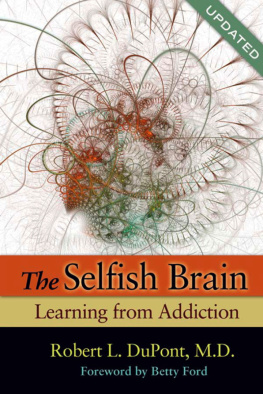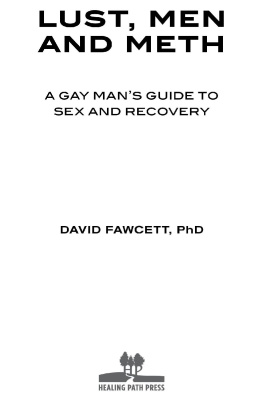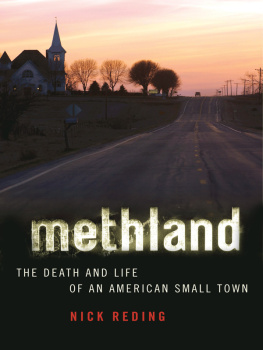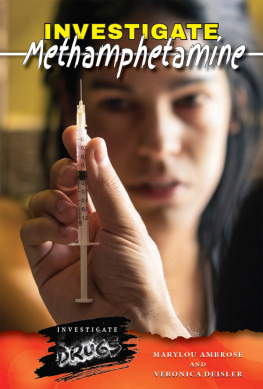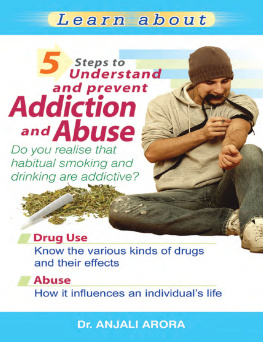crazy t wn
money. marriage. meth.
a riveting personal account and a thorough global history of methamphetamine abuse and
addiction
sterling r. braswell

Kallisti Publishing, Inc.
332 Center Street
Wilkes-Barre, PA 18702
Phone (877) 444-6188 Fax (419) 781-1907
www.kallistipublishing.com
Crazy Town. Copyright 2008 by Sterling R. Braswell. All rights reserved. No part of this book may be reproduced or transmitted in any form or by any means, electronic or mechanical, including photocopying, recording, or by any information storage and retrieval system, without permission in writing from the publisher, except by a reviewer, who may quote brief passages in review.
Kallisti Publishing, Inc. titles may be purchased for business or promotional use or for special sales. Please contact Kallisti Publishing for more information.
Kallisti Publishing, Inc. and its logo are trademarks of Kallisti Publishing, Inc.
Editing & page design/layout by Ron Kaye & Connie L. Schmidt of Schmidt Kaye & Company Professional Literary Services, Houston, Texas
This is an e-book of the print book with the following identifiers:
Library of Congress Control Number: 2008927439
ISBN 0-9678514-6-7
ISBN-13 978-0-9678514-6-4
DESIGNED & CODED IN THE UNITED STATES OF AMERICA
a note from the author
This is a true story. In some cases, either for the sake of flow or due to the authors imperfect memory, the sequence of events in the personal story may be somewhat off, but the events themselves, and their effects on the author, are portrayed accurately to the best of his recollection. To protect the privacy of the innocent and not-so-innocent, some names and other personal details have been changed.
Every effort has been made to ensure factual accuracy in the chapters tracing the history of methamphetamine and other recreational drugs. However, no source is unimpeachable, and regarding the history of meth or other drugs there are many matters about which even the experts disagree. It should also be noted that information regarding the legal status of the drugs in question, and data about drug laws, are always subject to change. For updated information visit the authors Web site at
http://www.crazytownthebook.com .
It was painful to write my story, but it is something that I felt needed to be done, and not just for catharsis; out of that pain, I hope, will come something useful. Perhaps more people will begin to understand that my story, with all of its lurid drama, is not all that unusual.
And maybe that is the real story in this book.
~ Sterling Braswell
www.crazytownthebook.com

crazy t wn
money. marriage. meth.
prlgue
T his book is about lunacy. More particularly, it is about a substance that makes lunatics out of the once sound-minded: the mechanic known to belly up to the bar for an hour before heading home, the hairdresser who always had a weakness, but rarely the money, for a line of cocaine. So often, they are people who previously harbored normal appetites for the release recreational drugs and alcohol provide, only to lose all sense of restraint to a mysterious and alien influence. This is to say the typical user does not begin sinless, but neither is he or she necessarily born doomed to some single-minded, self-destructive pursuit.
There is something inexplicably post-apocalyptic about the meth addicts existence. The color seems to have washed out of his or her world. As a former addict once put it, meth compels its user to live like a coyote homeless, and constantly foraging for mere sustenance. But this coyote is, it should be remembered, a human being who once lived among family and friends in a house filled with things she or he owned.
When thinking of the meth addict, it is also tempting to draw comparisons to Gollum, that nasty little creature in Tolkiens Lord of the Rings trilogy. Im sure I am not the first to do so. Once upon a time, Gollum was a Hobbit named Smeagol, though fans of the books or movies know that even as Smeagol he was no exemplary soul. He did, after all, strangle his best friend in order to take possession of the Ring. But it was obvious from the beginning that the Ring had possession of him, and as the years went by, he forgot everything he had ever been, lost what little decency or conscience hed had. As he tells it in the movie, We forgot the taste of bread, the sound of trees, the softness of the wind, we even forgot our own name. He became a scraggly, near-naked hunchback, until at the end he was nothing more than his deep hunger for my Preciousssss. He would gladly have killed anyone who got in the way of his retrieval of the Ring, but in the end, it was his own hunger that killed him. Lunacy, indeed, if not pure evil.
Beyond being about lunacy, this book is also about a very modern phenomenon, yet one with antecedents. Amphetamine was not first derived in the nineties at the dawn of the epidemic, as some might presume, but more than a century ago. Today methamphetamine is far and away the most prevalent synthetic drug clandestinely manufactured in the U.S. The trajectory is astonishing. In 1991 the DEA seized approximately 21 million dosage units of methamphetamine nationwide. The following year the number skyrocketed to 48 million. In 1996 more than 74 million units were seized, and in 2002 the number vaulted to an incredible 118 million dosage units. And they were seized in the most unlikely of places the countryside. Here, supplies were plentiful and meth manufacturers and dealers knew small-town police were not ready for them. Turns out there was no safer haven than the bathtubs of doublewides tucked in amongst the verdant hills of southern Iowa, in machine shops on the edge of the scenic hamlets of eastern Kansas, or on the small farms of western Missouri. And they have moved far beyond the Heartland, leaving in their wake a blight of insanity and violence that can only be described as cartoonlike.
In 1995 a man suffering from amphetamine psychosis broke into a San Diego National Guard armory and commandeered an unarmed Abrams tank. He then went on a rampage through residential neighborhoods, crushing cars, fire hydrants, anything that stood in his way. After taking the tank onto a freeway, he was finally stopped but refused to surrender, whereupon a police officer climbed atop the tank and shot the man through the heart.
Sixty miles to the north in Aguanga, a mobile home caught on fire after a mysterious explosion. According to witnesses at the scene, a group of seven or eight men ran out, fleeing for their lives, while outside the trailer a mother, holding her ten-year-old son, screamed that her other three children were still inside. When neighbors came running up to see if they could help, they were threatened by the men and warned away. No attempt was made to save the children, and when authorities arrived, the men scattered. Twelve hours later, firefighters waded through the charred remains to find the bodies of the three children, ages three, two, and one. The cause of the fire was determined to have been a methamphetamine lab explosion. When the men who had fled were finally rounded up, it was learned that they were not only meth cooks and dealers, but heavy users.
Paranoia is a hallmark of the meth users lunacy. This is not the quaint and common form of the affliction whereby the neighbor lady thinks her phone is being tapped, but the eerily acute kind that causes users to become scared witless because they believe they are being chased by invisible spiders and plastic people. In their minds, they have enemies by the score who are plotting and moving against them, and it is this quasi-reality, permeated with a scent of threat, that lends the meth culture its extraordinary violence. Remarkably few people fatally overdose on meth (only a few hundred in any given year out of millions of users); what kills is the paranoia it inspires. The meth addict feels that, other than meth itself, his best friend is his automatic weapon.

